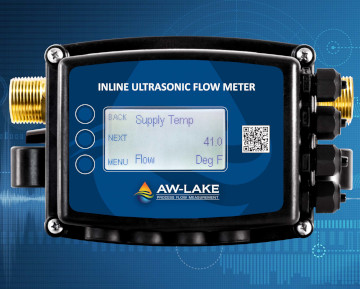A flow meter is a device that measures the rate of fluid flow through a pipe or a channel. In the marine industry, the flow meter plays an important role in ensuring the smooth operation of various processes, such as fuel consumption monitoring, ballast water management, measurement of cargo transfer, and ship performance analysis. In this article, we will explore the functionality of a marine flow meter and its key applications.

The Working Principle of a Marine Flow Meter
A marine flow meter typically consists of a sensor, a transmitter, and a display unit. The sensor is placed in the pipe or channel, and it generates a signal proportional to the flow rate of the fluid. The transmitter receives this signal and converts it into a digital output, which is sent to the display unit. The display unit shows the flow rate and other relevant information, such as total flow volume, temperature, density, and pressure.
There are several types of marine flow meters available in the market, each with its own advantages and disadvantages. The most common types are:
Magnetic Flow Meter: This type of flow meter uses the principle of Faraday's law of electromagnetic induction to measure the flow rate. It consists of a pipe with electrodes mounted on the opposite sides of the pipe wall. When a fluid flows through the pipe, it generates a voltage proportional to the flow rate, which is detected by the electrodes. The main advantage of this type of flow meter is its ability to measure fluids with low conductivity, such as seawater.
Doppler Flow Meter: This type of flow meter uses the Doppler effect to measure the flow rate. It emits a high-frequency sound wave into the fluid and measures the frequency shift caused by the fluid flow. The main advantage of this type of flow meter is its ability to measure the flow rate of fluids with suspended particles, such as sediment and algae.
Ultrasonic Flow Meter: This type of flow meter uses ultrasonic waves to measure the flow rate. It emits two ultrasonic waves into the fluid, one in the direction of the flow and the other in the opposite direction. The difference in the time taken for the waves to travel between the two sensors is proportional to the flow rate. The main advantage of this type of flow meter is its ability to measure the flow rate of both liquids and gases.
Applications of Marine Flow Meter
Fuel Consumption Monitoring: The marine industry is heavily dependent on fuel consumption, as it directly affects the operational costs and environmental impact. By installing a flow meter on the fuel line, ship operators can accurately measure the fuel flow rate and optimize the fuel efficiency. This enables them to reduce the fuel consumption and emissions, comply with the regulatory requirements, and improve the overall profitability.
Ballast Water Management: Ballast water is used to stabilize the ship during loading and unloading of cargo. However, it can also introduce invasive species and other harmful organisms into the marine environment. To prevent this, the International Maritime Organization (IMO) has mandated the installation of ballast water management systems on all ships. These systems include a flow meter to monitor the quantity and quality of the ballast water, and to ensure compliance with the IMO regulations.
Measurement of Cargo Transfer: In the shipping industry, the accurate measurement of cargo transfer is critical for both the buyer and the seller. By installing a flow meter on the cargo pipeline, the parties can have a transparent and reliable measurement of the volume and quality of the cargo. This reduces the disputes and improves the accountability and trust between the parties.
Ship Performance Analysis: The performance of a ship is influenced by various factors, such as the weather conditions, sea currents, and load distribution. By installing a flow meter on different systems, such as the engine, cooling water, and air conditioning, ship operators can monitor the performance and identify any potential issues. This enables them to take preventive actions, such as maintenance and repair, and ensure the safety and reliability of the ship.
Conclusion
A marine flow meter is a crucial device that enables the efficient and safe operations of various processes in the marine industry. Its ability to measure the flow rate of fluids with high accuracy and reliability has made it an indispensable tool for ship operators. By understanding the functionality and applications of marine flow meters, the industry can achieve the sustainability and profitability goals while ensuring the protection of the marine environment.